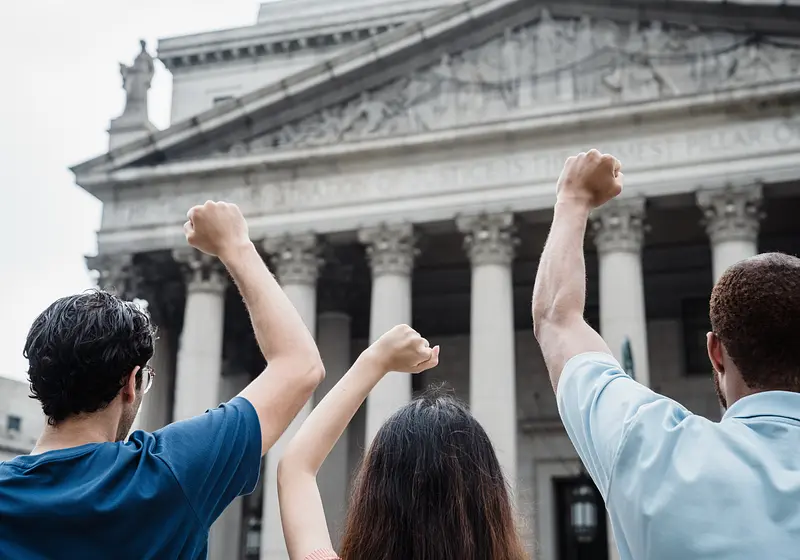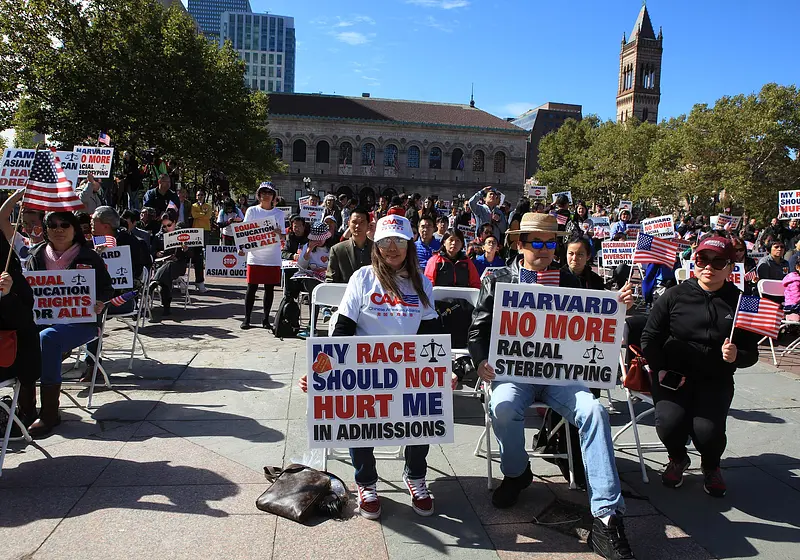I'm sure everyone is reeling from shock after the Supreme Court's decision overturning nearly seven decades of established precedent. The death of Affirmative Action. Everyone who has gone through the college admissions process or has watched the news before and lately has the term, Affirmative Action.
But there are probably some of you out there wondering…what the heck is Affirmative Action??? Well, you've come to the right place. First, we must delve into the definition of this word and explore its historical context before helping you fully grasp the significance of the Supreme Court's decision and its far-reaching implications.
Affirmative action is a policy or set of actions implemented by governments, educational institutions, and workplaces to address historical and ongoing discrimination and promote equal opportunities for underrepresented groups. It aims to level the playing field by considering factors such as race, gender, ethnicity, or socioeconomic background during the selection process for employment, education, or contracting opportunities.
Affirmative action aims to create a more diverse and inclusive society by providing preferential treatment or specific advantages to marginalized individuals who have been historically disadvantaged. This policy has been highly debated, with proponents arguing that it is necessary to rectify past injustices and promote diversity, while critics contend that it can lead to reverse discrimination or undermine merit-based systems.

Let us slide into your dms 🥰
Get notified of top trending articles like this one every week! (we won't spam you)The History
It all started on March 6, 1961, when President John F. Kennedy issued Executive Order 10925 establishing the President's Committee on Equal Employment Opportunity and included a provision that government contractors "take affirmative action to ensure that applicants are employed, and employees are treated during employment, without regard to their race, creed, color, or national origin." The purpose of this executive order was to ensure equal opportunities for all qualified individuals and to proactively enhance initiatives aimed at achieving genuine equal opportunity. However, this executive order was later replaced by Executive Order 11246 in 1965.
Six months later, President Lyndon B. Johnson issued Executive Order 11246. This order establishes a prohibition against employment discrimination rooted in race, color, religion, and national origin for organizations that receive federal contracts and subcontracts.
In 1967, President Johnson expanded the order to encompass sex as well. Additionally, Executive Order 11246 mandates that federal contractors must actively take affirmative action to achieve equal opportunities for women and minorities.
As time went on, the term also focused on education, fueled by the civil rights movement and social unrest. In 1971, a legal dispute emerged challenging affirmative action policies recently adopted by educational institutions. Marco DeFunis, a white student, filed a lawsuit against the University of Washington Law School, claiming that he had been unfairly rejected due to reverse racism.
Interestingly, by the time the case made its way to the Supreme Court, DeFunis was on the verge of completing his law degree, having only one semester left. Consequently, the Supreme Court decided to dismiss the case, as it was deemed less consequential since DeFunis was close to fulfilling the requirements for graduation. In the University of California v. Bakke (1978), the Supreme Court ruled that strict racial quotas in college admissions were unconstitutional. However, the court also affirmed the constitutionality of considering race as one factor among many in the admissions process to achieve diversity. Another notable case is Grutter v. Bollinger (2003), in which the Supreme Court upheld the University of Michigan Law School's affirmative action policy. The court recognized that diversity in higher education is a compelling state interest and that race-conscious admissions programs can be constitutional if they are narrowly tailored and use holistic review processes.
Take the Quiz: Which Indian city is the perfect holiday spot for you!?
Let's match you with an Indian city that you would love!
How is this relevant now?
Nowadays, numerous universities incorporate an individual's race as one aspect of their comprehensive evaluation process for prospective students. Conversely, the legislation prohibits colleges from employing affirmative action in certain states in their admissions procedures. Since 2023, nine states — California (1996), Washington (1998, rescinded 2022), Florida (1999), Michigan (2006), Nebraska (2008), Arizona (2010), New Hampshire (2012), Oklahoma (2012), and Idaho (2020) have implemented policies that banned affirmative action from their surrounding universities.
But after years of battles and arguments about whether affirmative action should or shouldn't exist, the Supreme Court dropped a huge bombshell on June 29, 2023. By a vote of 6-3, the Supreme Court ruled that affirmative action was unconstitutional and should be eliminated.
Writing for the majority, Chief Justice John Roberts stated that while college admissions could consider race to allow an applicant to explain how race influenced their character in a profound way that would have a huge effect on the university. However, a student "must be treated based on his or her experiences as an individual — not on the basis of race," Roberts wrote. Justices Clarence Thomas, Samuel Alito, Neil Gorsuch, Brett Kavanaugh, and Amy Coney Barrett sided with Roberts.
Justice Sonia Sotomayor called herself "the perfect affirmative action baby" and wrote, "At its core, today's decision exacerbates segregation and diminishes the inclusivity of our Nation's institutions in service of superficial neutrality that promotes indifference to inequality and ignores the reality of race. Today, this court overrules decades of precedent and imposes a superficial rule of race blindness on the Nation." in her dissenting opinion. Ketanji Brown Jackson excused herself from the Harvard case because she has served on the university's Board of Overseers but issued a separate scathing dissenting opinion in the North Carolina case. However, there are exceptions to the decision stating that the US military service academies are still allowed to consider race as a factor in admissions.
Many GOP officials are celebrating the decision, while Democrats are outraged at the court. House Speaker Kevin McCarthy said the justices "just ruled that no American should be denied educational opportunities because of race." And Republican Sen. Ted Cruz, who sits on the Senate Judiciary Committee, stated, "This is a great day for all Americans." Senate Majority Leader Chuck Schumer called the ruling "a giant roadblock in our country's march toward racial justice."
Final Thoughts
It doesn't matter whether you're applying for college or applying for work in the job field. This decision can alter the course of America's education system and how colleges try to diversify their student body. Data has shown that colleges and states that have implemented bans on affirmative action have witnessed a decline in the representation of Black students in their undergraduate populations.
For example, the University of Michigan Black undergraduate enrollment at the University of Michigan dropped nearly by half—from 7 percent in 2006 to 4 percent in 2021 with affirmative action out of the way. Schools like UC Berkeley and UCLA experienced the biggest effects, with a 60 percent drop in Black, Latinx, and Indigenous students. Eliminating affirmative action extends beyond the supposed goal of "leveling the playing field." By eradicating affirmative action, it effectively dismantles the safeguard that seeks to mitigate racial discrimination and paves the way for significant racial bias to prevail. This decision could open the doors to other safeguards for minorities being dismantled, affecting other aspects of our lives, such as jobs and other spaces. Many colleges responded since the decision was released, stating they will try to find ways to continue prioritizing diversity on campus. However, numerous detractors of this ruling have also highlighted the failure to address how legacy considerations influence the admissions process and how they account for a good chunk of the student body. Regardless of the perspective, this ruling has far-reaching implications that affect everyone, even those you think may be uninvolved. It is crucial for us to recognize the significance of this moment and remain vigilant, as the consequences of this decision may have broader implications. What may seem like a single issue now has the potential to unlock a multitude of other circumstances, some of which may not be favorable. We must remain mindful of the potential ramifications and closely monitor the unfolding events.















